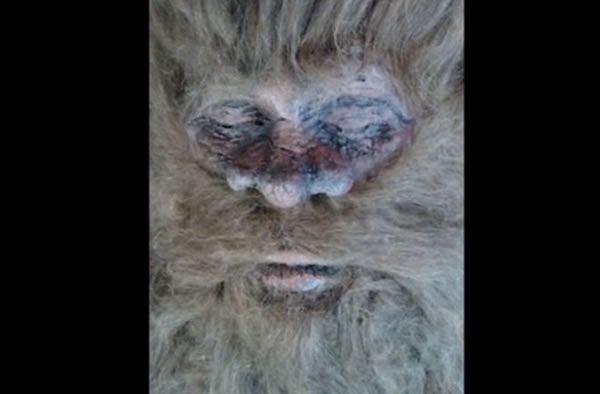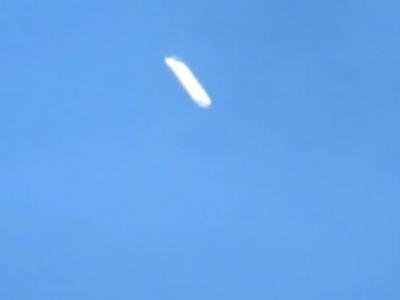New Bigfoot Claim, Old Bigfoot Hoaxer
A wilderness tracker says he shot and killed a Bigfoot -- whom he named Hank -- in late 2012, but he kept the mystery under wraps until now.
If this sounds dubious (or familiar) to you, it should. The tracker, Rick Dyer, was one of two Georgia men who, in 2008, claimed to have found a dead Bigfoot creature nearly 8 feet all, covered with hair and weighing 500 pounds. They released a photograph of it inside a freezer, promising DNA evidence at a press conference.
The press conference made national news, but didn’t quite live up to expectations. As National Geographic news reported:
“Only days after Georgia residents Matt Whitton and Rick Dyer told reporters at a press conference on Friday that they had a dead Bigfoot body, their evidence has been exposed as a rubber ape costume. The deception was made public by the very company Whitton and Dyer teamed up with to announce their supposed find. In a statement posted on the Web site of Searching for Bigfoot Inc., “Sasquatch Detective” Steve Kulls said he realized the Bigfoot ‘corpse’ was a fake when the frozen body began to thaw -- after the press conference had already taken place.”
This time, Dyer insists, he has the real deal.
Dyer told KSAT News, "Bigfoot is not a tooth fairy -- Bigfoot is real. The most important thing to me is being vindicated, letting people know that I am the best Bigfoot tracker in the world and it’s not just me saying it."
Dyer is expected to hold another press conference to show the body, and he plans to take it on a tour of the United States, Mexico and Canada. He’ll charge a small fee to view it, KSAT reports.
Dyer also has a new documentary film he’s promoting. And he's released a photo he claims is of Hank’s face, but which resembles Norwegian troll figurines sold at Disney World’s Epcot theme park.
Bigfoot Credibility Goes Bust
This is, of course, not the first time that people have claimed to have found a Bigfoot, alive or dead. The history of the search for Bigfoot parallels the history of Bigfoot hoaxes.
For many years the pursuit of Bigfoot -- and its foreign cousins such as the Australian yowie, the Himalayan yeti, and the Canadian sasquatch -- was driven by genuine scientific curiosity.
In his book “Searching for Sasquatch: Crackpots, Eggheads, and Cryptozoology,” Brian Regal, an assistant professor for the history of science at Kean University, describes the state of monster-hunting a half-century ago:
“Unlike the common view of scientists uninterested in such a pursuit, and even actively discouraging it, the story of the hunt for the Yeti reveals a more complex situation. Some anthropologists and other scientists took to the subject with enthusiasm to the point of actively engaging in the hunt. The 1950s and 1960s can be seen as a golden era of cooperation between amateurs and academics in the search for manlike monsters.”
These serious scientific researchers are mostly a relic of the past. Today’s Bigfoot community is populated -- many would say contaminated -- by publicity-seeking promoters, hoaxers and self-styled Bigfoot buffs who offer perpetually fruitless weekend tours into the wilderness to look for the beast.
Ironically, these folks may sound the death knell for serious Bigfoot research. Sooner or later the public will tire of the parade of hoaxes, exaggerated claims and publicity stunts. It will become more and more difficult for sincere, science-minded researchers -- such as Todd Disotell and Brian Sykes, two geneticists who have attempted to sequence DNA from unknown animals -- to do their work.
Real science moves forward through cautious claims, careful analysis and peer-reviewed evidence. How can it compete with outlandish, fictional claims of Bigfoot bodies for the public’s attention, support and interest?
If and when the existence of Bigfoot, the Loch Ness Monster, ghosts or other such mysterious entities is proven, information about it will appear in legitimate academic journals and reputable news outlets, not personal web sites, YouTube videos and independent documentary films.
If Bigfoot researchers wish to be taken seriously, they could start by cleaning their own house. The biggest threat to their credibility is not skeptics nor a ridiculing public but instead those who provide an endless stream of bogus claims and evidence.(Jan 6, 2014 03:30 PM ET // by Benjamin Radford)












